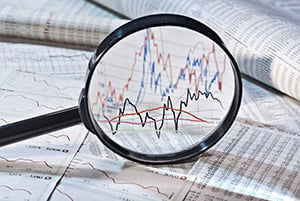 Much of the discussion around the market decline so far this year has been, first, why is it happening and, second, how far will it go? Most people are looking at the market as an independent entity, trying to second-guess how it will act in the future. Most people will, inevitably, be wrong.
Much of the discussion around the market decline so far this year has been, first, why is it happening and, second, how far will it go? Most people are looking at the market as an independent entity, trying to second-guess how it will act in the future. Most people will, inevitably, be wrong.
I have done several posts along those lines, linking the decline to the rise in interest rates and noting that we are getting close to fair value. If so, and if interest rates stabilize (which may be happening), then we should be close to the bottom here. But, as noted above, I could be wrong. Today, I want to assume I am wrong—and think about what that might mean.
Could It Get Worse?
The most probable way I am wrong is that inflation continues, the Fed is forced to keep raising rates even more than the market now expects, and, with interest rates rising, market valuations keep dropping. On top of that, with higher rates, growth will likely slow and earnings growth will slow as well. Note that I do not expect that outcome. But if it happens, we will see further market declines.
This brings us to the real question. We have a significant decline already, and people are scared. If it gets worse (i.e., if something like the above happens), people will be even more upset. So, given all of that, what should we do now?
Time to Get Out?
The easy answer, one I hear from more and more people, is to get out of the market, wait for it to bottom, and then buy in. This is easy to say, but not easy to do. I know people who sold in 2008 and were going to buy back in but never did. I know people in the same boat from 2020. It is easy to get out because you are scared, but it is very hard to get back in—because there is always something to be scared about. And bouncebacks often happen quickly, so you might miss out on much of it if you wait too long. In short, if you get out of the market, that is only the start of your problems because you now face the problem of when to get back in.
My own take on this is that if you get out, you have to decide ahead of time when you will get back in. Otherwise, you very likely won’t. And when you do? It may well be too late. For most investors, this situation ends up as selling low and buying back high—the opposite of what you want to do.
Let It Ride?
The harder (but better) answer is to ride the decline out. If investors have enough time, then historically speaking, the decline will end and they will end up recovering their losses and then some. If the people I mentioned above, who sold in 2008 and 2020, had simply sat tight, they would be better off today.
During market declines, investors who put money into the market get a chance to buy cheap—and can end up ahead of those who sold. Investors are often better served by being patient and riding out declines.
Have We Seen This Movie Before?
Easy to say, but how do investors ride this out? Emotionally, they can keep their eyes on the long term. If they don’t need the money, they really can afford to wait, knowing that as long as the economy grows, the market will eventually recover. It happened in 2000, it happened in 2008, and it happened in 2020. Declines cause fear, as we are seeing now, but they eventually give way to new growth, which brings back greed—and the market recovers. We have seen this movie before. Financially, investors should consider having their portfolios balanced in such a way that they can afford to wait until the cycle turns, with enough in cash and fixed income that they can avoid drawing down their stocks.
Unfortunately, both of these are much easier to say than to do. In both cases, though, this is where financial advisors can add real value: by helping investors understand the long-term prospects—markets will recover and so will their portfolios—as well as designing portfolios to help get them through the inevitable market pullbacks.
So, What Do We Do Now?
Investors should consider checking their portfolio with their advisor, making sure they understand it and how it matches with their needs, and then simply sitting tight. This has been the best strategy in the past, and it’s useful guidance whenever markets become volatile.
In other words, one more time: keep calm and carry on.


 Print
Print

